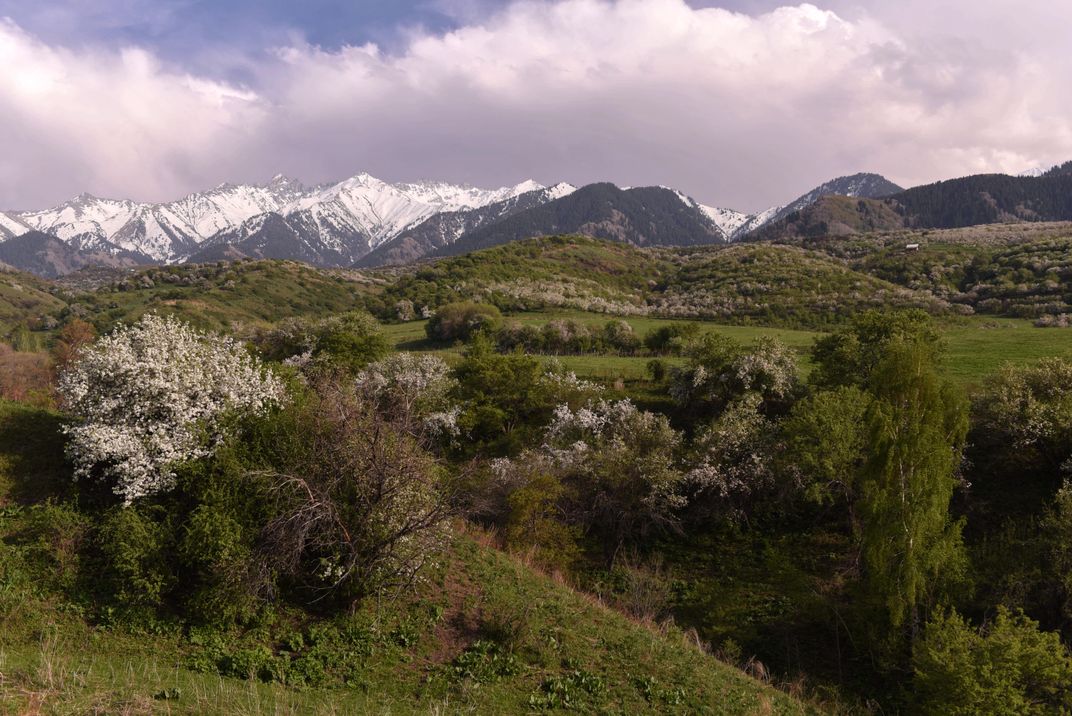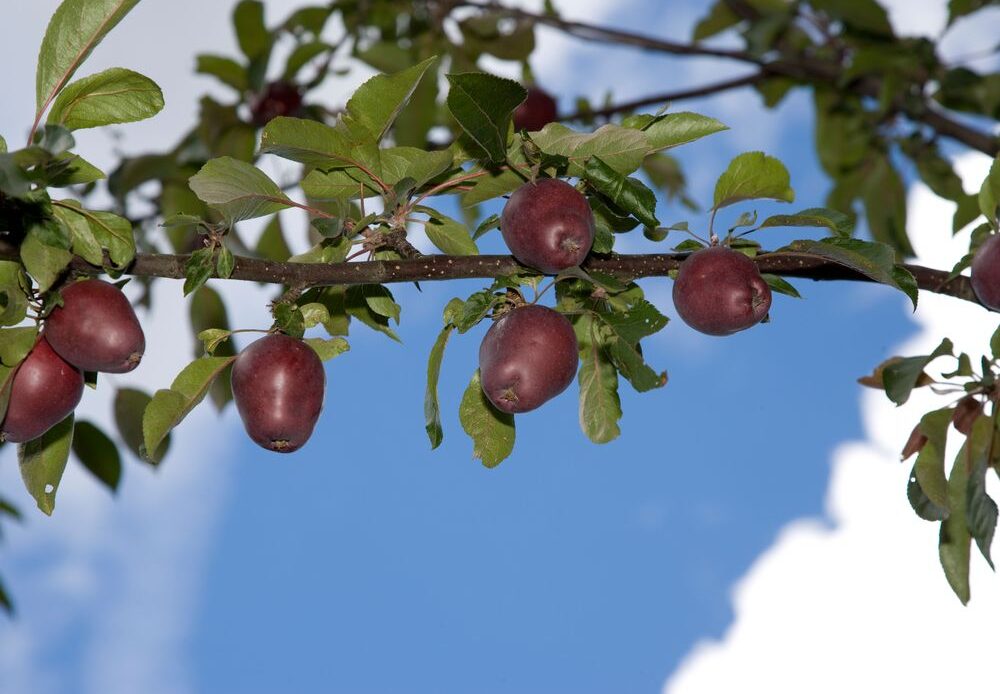Malus sieversii is a wild apple native to the mountains of southern Kazakhstan.
Anna Yu/Alamy
The foothills of Kazakhstan’s Tian Shan mountains are something of a genetic wonderland. This vast mountain system forms the border between China and Central Asia, and between its higher spruce-covered slopes and its lower poplar trees are dense patches of woodlands, ones brimming with walnuts and wild fruits. These include apricots, cherry plums and pears, as well as Malus sieversii, a wild apple—the primary ancestor of the modern apple—that’s been growing in this region for thousands of years.
Thousands of apple varieties—crunchy, thick-skinned Fujis, which originated in Japan in the 1930s; aromatic Galas; and rare Pink Pearls—exist in the world today, many of them bred for their distinct flavor, color and texture. Turns out the bulk of these domesticated apples can be traced right back to Kazakhstan’s Malus sieversii. Despite the variety, however, only 15 types of apples account for 90 percent of apples grown throughout the United States. These specialty crops are especially susceptible to diseases like apple scab, a fungal ailment that attacks both a tree’s leaves and fruit with unsightly lesions, and outbreaks of highly infectious fire blight, which can kill entire trees outright.
“Wild apple populations have a far greater gene diversity than within any domesticated variety,” says Robert Spengler, author of Fruit From the Sands: The Silk Road Origins of the Foods We Eat, meaning the key to apple survival just may lie along the Tian Shan foothills.
“It’s a complicated history, but conservationists generally consider that what’s left of the wild apple is in the Tian Shan mountains,” he adds. Spengler is an archaeobotanist studying the ancient remains of plants. He’s spent years visiting Kazakhstan’s wild apple forests and archaeological sites along the Silk Road, “piecing together the breadcrumb trail,” he says, of how this network of Eurasian trade routes throughout Central Asia directly shaped the foods we eat today.
While the exact number of Malus sieversii is unknown, the bulk remaining in Kazakhstan grow freely and untamed. Maxim Pushkarev/Alamy
It’s commonly believed that apples originated in Central Asia, their…
Click Here to Read the Full Original Article at Travel | smithsonianmag.com…
